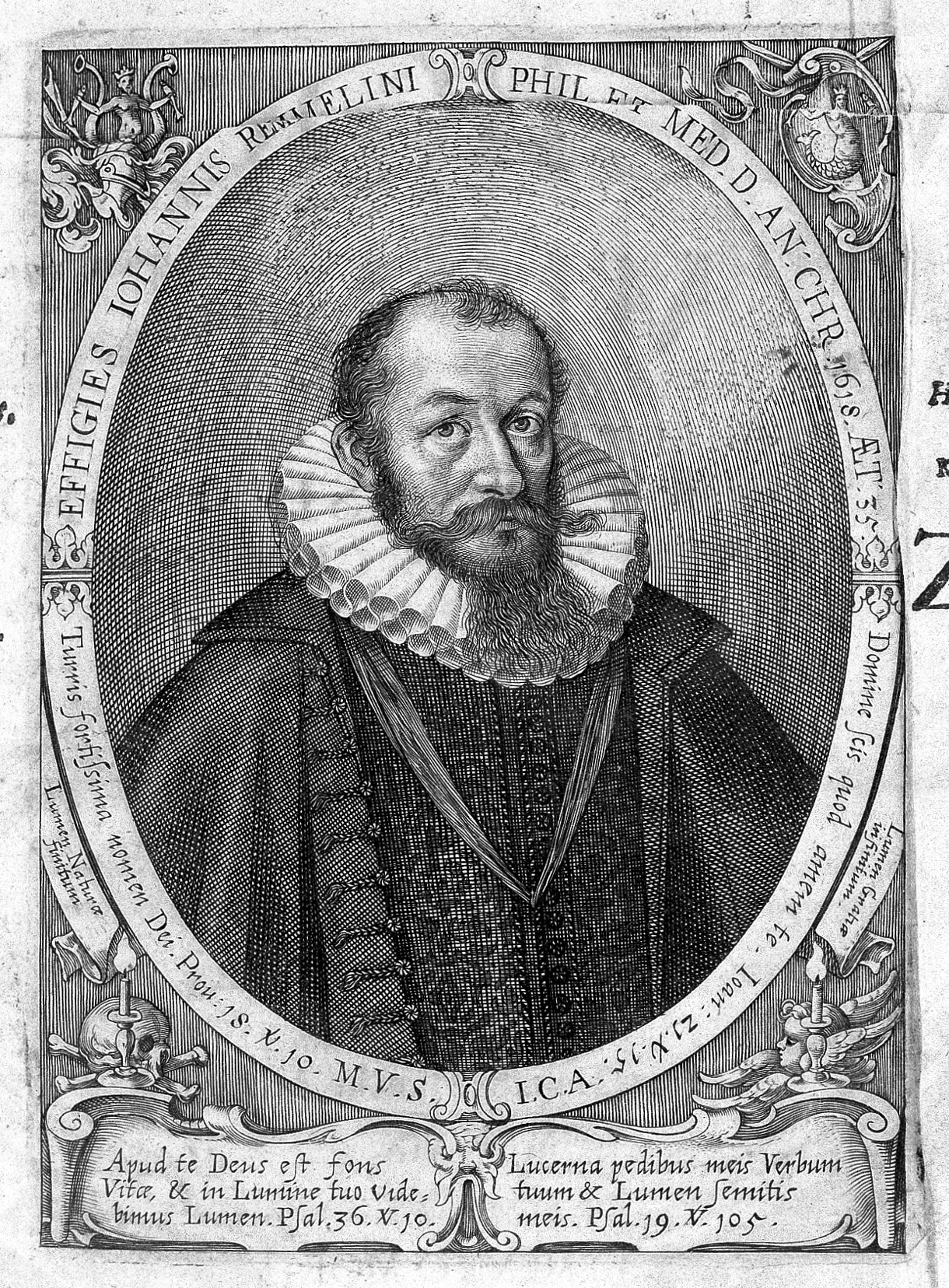Johann Remmelin on:
[Wikipedia]
[Google]
[Amazon]
 Johann Remmelin (Latinized as Johannes Remmelius and in German as Johannes Rümelin) (28 July 1583 – 1632) was a German
Johann Remmelin (Latinized as Johannes Remmelius and in German as Johannes Rümelin) (28 July 1583 – 1632) was a German
Catoptrum microcosmicum
(The plates from the University of Toronto)
Scanned copy from McGill University
(with flaps shown)
Kleiner welt spiegel
(digitized German edition, 1661) with information on th
scanning
{{DEFAULTSORT:Remmelin, Johann 1583 births 1629 deaths 17th-century German physicians
 Johann Remmelin (Latinized as Johannes Remmelius and in German as Johannes Rümelin) (28 July 1583 – 1632) was a German
Johann Remmelin (Latinized as Johannes Remmelius and in German as Johannes Rümelin) (28 July 1583 – 1632) was a German city physician
City physician (German language, German: ; , , from Latin ) was a historical title in the Late Middle Ages for a physician appointed by the city council. The city physician was responsible for the health of the population, particularly the poor, ...
who worked in Ulm. He is best known as the inventor of a peelable flapbook dealing with human anatomy. This book, titled , originally in Latin and issued in 1613 with later editions and translations, had pages with flaps that could be opened to show the anatomy of the human body in layers, simulating a dissection.
Life and work
Rümelin was born inUlm
Ulm () is the sixth-largest city of the southwestern German state of Baden-Württemberg, and with around 129,000 inhabitants, it is Germany's 60th-largest city.
Ulm is located on the eastern edges of the Swabian Jura mountain range, on the up ...
, one of eighteen children of merchant Hans Ludwig Rümelin and Elisabet Marchtaler. The theologian Johannes Piscadorius who was born in Rümelin may have been a relative but little is known of Rümelin's early life. He became a student at the University of Tübingen
The University of Tübingen, officially the Eberhard Karl University of Tübingen (; ), is a public research university located in the city of Tübingen, Baden-Württemberg, Germany.
The University of Tübingen is one of eleven German Excellenc ...
and matriculated in June 1602. He studied philosophy and became a master on 22 August 1604. He then went to Basel in 1605 and received a doctorate in 1607 with a dissertation titled "". He then became a physician in Ulm but following disputes he moved out. The cause of the problem was that the city regulations required doctors to only prescribe and let pharmacists provide the medicine. Rümelin as well as the doctors Hönes and Stromaier had to move out because they clashed with the pharmacists. They found the pharmacies were sloppy and began to obtain the drugs themselves for the patients. This led to their being denounced in 1611 and he was asked to give an explanation in 1613 by the city council. After further bureaucratic struggles, a house search, and confiscation of medicines, he became a city physician
City physician (German language, German: ; , , from Latin ) was a historical title in the Late Middle Ages for a physician appointed by the city council. The city physician was responsible for the health of the population, particularly the poor, ...
at Schorndorf
Schorndorf () is a town in Baden-Württemberg, Germany, located approximately 26 km east of Stuttgart. Its train station is the terminus of the S2 line of the Stuttgart S-Bahn.
The town is also sometimes referred to as ' (''The Daimler T ...
in 1617. There he had a son, Johann Anastasius (b. 1621), who also became a physician. He has been said to have worked at Aalen around 1628 (but with little evidence) from where he moved to Augsburg as a plague doctor. His death was recorded in Augsburg in June 1629 according to the city archives (but without the date). Rümelin was married twice, first to Rosine Kallhardt from Ulm, widow of a Jakob Rüber in Konstanz, whom he married at Ulm in 1607. In 1609 he married Elisabeth Vesenbeck, daughter of theologian Johannes Vesenbeck of Ulm. His portrait was included in the 1619 Latin edition of his book. He also took an interest in mystical numerological studies and was noted as a collaborator of Johann Faulhaber
Johann Faulhaber (5 May 1580 – 10 September 1635) was a German mathematician, specifically, a calculator ('':de:Rechenmeister, Rechenmeister'').
Biography
Born in Ulm, Faulhaber was a trained weaver who later took the role of a surveyor of th ...
.
Rümelin is best known for his work (meaning ). The illustrations were drawn by Lucas Kilian
Lucas Kilian (; 1579–1637) was a German engraver and etcher from the Kilian family of engravers in Augsburg. He became renowned as an engraver in the city of Augsburg working for the Custos workshop founded by his step father. He produced por ...
(1579–1637) and engraved in copper by Stephan Michelspacher. The work was made with three plates and foldouts and in some parts the anatomy went down to nearly 17 layers. In the 1613 edition, Remmelin's name was not visible but a supposed portrait and coat-of-arms was included on the first plate. An English edition was produced in 1702 by Clopton Havers
Clopton Havers (24 February 1657 – April 1702) was an English physician who did pioneering research on the microstructure of bone. He is believed to have been the first person to observe and almost certainly the first to describe what are now ...
. A Japanese edition, the first anatomy text in Japan, was produced by Motoki Ryōi in 1696 as ().
References
External links
Catoptrum microcosmicum
(The plates from the University of Toronto)
Scanned copy from McGill University
(with flaps shown)
Kleiner welt spiegel
(digitized German edition, 1661) with information on th
scanning
{{DEFAULTSORT:Remmelin, Johann 1583 births 1629 deaths 17th-century German physicians